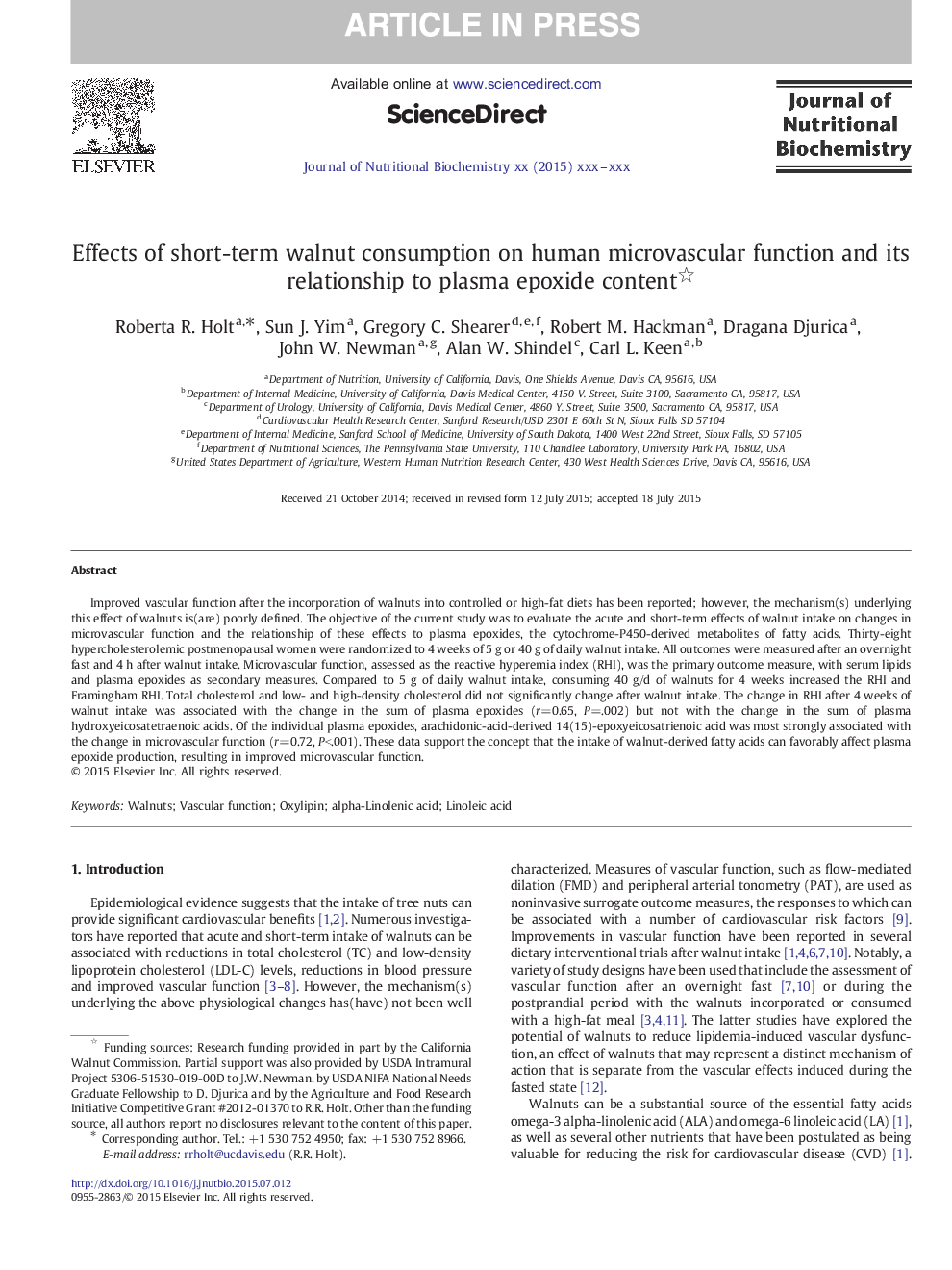| Article ID | Journal | Published Year | Pages | File Type |
|---|---|---|---|---|
| 8336756 | The Journal of Nutritional Biochemistry | 2015 | 9 Pages |
Abstract
Improved vascular function after the incorporation of walnuts into controlled or high-fat diets has been reported; however, the mechanism(s) underlying this effect of walnuts is(are) poorly defined. The objective of the current study was to evaluate the acute and short-term effects of walnut intake on changes in microvascular function and the relationship of these effects to plasma epoxides, the cytochrome-P450-derived metabolites of fatty acids. Thirty-eight hypercholesterolemic postmenopausal women were randomized to 4 weeks of 5 g or 40 g of daily walnut intake. All outcomes were measured after an overnight fast and 4 h after walnut intake. Microvascular function, assessed as the reactive hyperemia index (RHI), was the primary outcome measure, with serum lipids and plasma epoxides as secondary measures. Compared to 5 g of daily walnut intake, consuming 40 g/d of walnuts for 4 weeks increased the RHI and Framingham RHI. Total cholesterol and low- and high-density cholesterol did not significantly change after walnut intake. The change in RHI after 4 weeks of walnut intake was associated with the change in the sum of plasma epoxides (r=0.65, P=.002) but not with the change in the sum of plasma hydroxyeicosatetraenoic acids. Of the individual plasma epoxides, arachidonic-acid-derived 14(15)-epoxyeicosatrienoic acid was most strongly associated with the change in microvascular function (r=0.72, P<.001). These data support the concept that the intake of walnut-derived fatty acids can favorably affect plasma epoxide production, resulting in improved microvascular function.
Related Topics
Life Sciences
Biochemistry, Genetics and Molecular Biology
Biochemistry
Authors
Roberta R. Holt, Sun J. Yim, Gregory C. Shearer, Robert M. Hackman, Dragana Djurica, John W. Newman, Alan W. Shindel, Carl L. Keen,
